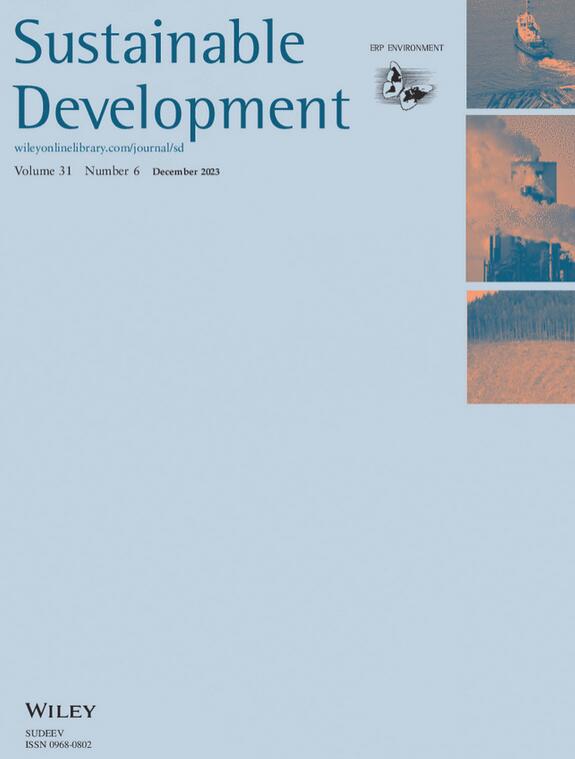A framework for measuring the implementation of the Sustainable Development Goal 4.2 (Quality Preprimary Education) at the local scale: an empirical study in Nanjing, China
IF 8.2
1区 环境科学与生态学
Q1 DEVELOPMENT STUDIES
引用次数: 0
Abstract
Equalizing preprimary education is vital for promoting social welfare and aligns with the UN's 2030 Agenda Sustainable Development Goals, particularly SDG 4.2 which advocates equal and adequate access to quality preprimary education for all children. We developed an accessibility‐based analysis framework to assess the SDG 4.2 progress at local scale, providing improved policy recommendations for local governments by considering spatiality, equality, and adequacy across different spatial scales. The Huff–G2SFCA model was used at the grid scale to capture progress and spatial heterogeneity in preprimary education facilities and parental preferences. We used the Gini coefficient to measure the resource distribution equality at the subdistrict and district scales. The adequacy of resources across districts was evaluated using the supply–demand ratio. Our findings in Nanjing highlight challenges due to inadequate and unequal allocation of preprimary education resources, hindering SDG 4.2 advancement. Approximately 8% of children face difficulties accessing quality preprimary education, and a Gini coefficient of 0.52 indicating educational inequality. Despite positive progress in Nanjing's central urban area, suburban, and rural regions, especially the Gaochun and Lishui Districts, face significant challenges of preprimary education resource adequacy and equality in their pursuit of SDG 4.2.在地方范围内衡量可持续发展目标 4.2(优质学前教育)落实情况的框架:中国南京的实证研究
学前教育公平化对促进社会福利至关重要,与联合国 2030 年议程可持续发展目标相一致,尤其是可持续发展目标 4.2,该目标倡导所有儿童平等、充分地接受优质学前教育。我们开发了一个基于可达性的分析框架,以评估可持续发展目标 4.2 在地方范围内的进展情况,通过考虑不同空间尺度的空间性、平等性和充分性,为地方政府提供更好的政策建议。在网格尺度上使用 Huff-G2SFCA 模型来捕捉学前教育设施和家长偏好方面的进展和空间异质性。我们使用基尼系数来衡量分区和地区尺度上的资源分配平等性。我们使用供需比来评估各区资源的充足性。我们在南京的研究结果凸显了学前教育资源分配不充分和不平等所带来的挑战,阻碍了可持续发展目标 4.2 的推进。约8%的儿童难以获得优质学前教育,基尼系数为0.52,表明教育不平等。尽管南京中心城区取得了积极进展,但郊区和农村地区,尤其是高淳区和溧水区,在实现可持续发展目标4.2的过程中,面临着学前教育资源充足性和平等性的重大挑战。
本文章由计算机程序翻译,如有差异,请以英文原文为准。
求助全文
约1分钟内获得全文
求助全文
来源期刊

Sustainable Development
Multiple-
CiteScore
17.30
自引率
11.20%
发文量
168
期刊介绍:
Sustainable Development is a publication that takes an interdisciplinary approach to explore and propose strategies for achieving sustainable development. Our aim is to discuss and address the challenges associated with sustainable development and the Sustainable Development Goals. All submissions are subjected to a thorough review process to ensure that our readers receive valuable and original content of the highest caliber.
 求助内容:
求助内容: 应助结果提醒方式:
应助结果提醒方式:


